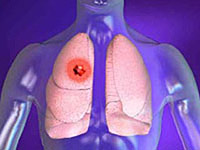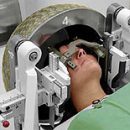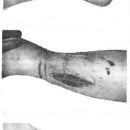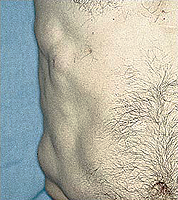What is lung cancer? What are the risk factors for lung cancer? Answers to these questions you will find in the article.
Content
The shell around the lungs, called Plever, protects the lungs and helps them move during breathing. Fucking air enters the lungs. The trachea is divided into bronchi, and those, in turn, - on smaller bronchi called bronchioles. At the end of these small branches there are very small air bags - Alveola.
Most malignant lung tumors develop from the epithelium of bronchi, but they can occur in other places - trachea, bronchioles and alveoli. Often for the development of cancer takes many years. If the lung cancer arose, then it can spread (metastase) to other parts of the body. Lung cancer is a dangerous disease for a person, as it is often revealed in a widespread stage.
Two types of lung cancer
There are two main types of lung cancer: fine-cell and non-cellular cancer. If the tumor has the features of both types of cancer, then it is called mixed finely milking cancer.
Non-cell flower lung cancer - The most frequent look of lung cancer and is 80% of the number of all malignant lung tumors. The fraction of small-cell lung cancer accounts for about 20% of all lung tumors. Tumor cells in this form of cancer are quickly multiplied, form large tumor nodes and metastasis (distributed) to other organs: brain, liver and bones.
Small flower cancer Almost always caused by smoking and very rarely occurs in non-smoking people.
Who has a lung cancer
Risk factors that increase the likelihood of cancer development, various tumors are different. Some factors, such as smoking, can be changed. Others, such as age or family history (heredity), cannot be changed. The presence of one or more risk factors does not mean that this person will have cancer.
Smoking is the main risk of lung cancer. Tobacco smoking causes 8 out of 10 cases of lung cancer. The longer smokes man and the more cigarette packs per day, the higher the risk. If a person stops smoking to the emergence of lung cancer, the pulmonary cloth gradually returns to normal. The cessation of smoking at any age reduces the risk of lung cancer. Smoking of cigars and tubes similarly to smoking cigarettes and is accompanied by the same risk. To date, there is no evidence that smoking low-resins cigarettes reduces the risk of lung cancer.
Non-smokers inhaling tobacco smoke (passive smoking), Also have increased risk of lung cancer. If one of the spouses smokes, the risk of lung cancer in the second non-smoking increases by 30% compared to non-smoking couple.
 Aluminum industry workers, The gasification and coking of coal, the foundry industry, the production of isopropyl alcohol, the rubber industry and the production of hematitis also there is a high probability of lung cancer.
Aluminum industry workers, The gasification and coking of coal, the foundry industry, the production of isopropyl alcohol, the rubber industry and the production of hematitis also there is a high probability of lung cancer.
Asbestos is another lung cancer risk factor. People working with asbestos have increased risk of lung cancer. In case they also smoke, the risk increases significantly. Mesothelioma (malignant tumor) associated with asbestos often develops from pleura.
Radon It is a radioactive gas arising from the natural decay of uranium. Radon can not see, try or sniff. Radon can concentrate indoors and lead to increased risk of cancer.
Cancer substances include: uranium, arsenic, vinyl chloride, nickel, coal products, Iprit, chloromethyl ethers, diesel exhaust. People working with these substances must be careful and safety regulations.
Marijuana. Marijuana cigarettes contain more resin compared to conventional cigarettes. Marijuana contains many substances that cause cancer, as in cigarettes. There are guidance on the fact that marijuana can cause oral cancer and pharynx.
Tuberculosis and some types of lung inflammation often leave after themselves scars, and these scars can increase the risk of lung cancer.
Minerals. Talc can increase the risk of lung cancer in those who get it or works with it. People with diseases caused by inhalation of some minerals also have increased risk of lung cancer.
Personal or family history. If you transferred lung cancer, then there is an increased risk of a different malignant tumor of lung. Brothers, sisters and children who have suffered lung cancer, slightly increased the risk of the same cancer.
Low fruit diet and vegetables can increase the risk of lung cancer in people under the influence of tobacco smoke. It is assumed that apples, onions and some other fruits and vegetables have a protective effect against lung cancer.
Floor. Some studies have shown that light women under the action of tobacco smoke are more often subjected to malignant reincarnation.
In recent years, great progress has been made in understanding how risk factors lead to changes in the DNA of the lung cells, forcing them to turn into malignant. It can be hoped that the identified DNA changes will allow diagnosing lung cancer in the early stages, in addition, work is underway to restore or replace the changed genes in order to stop tumor growth and prevent cancer spread.









